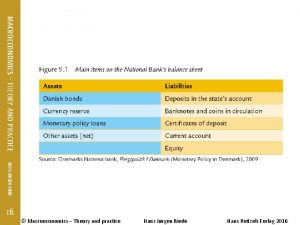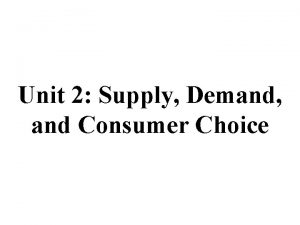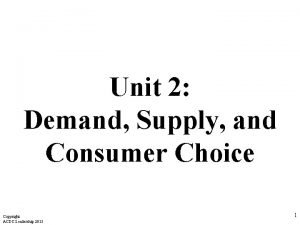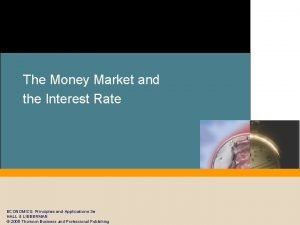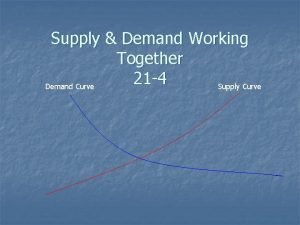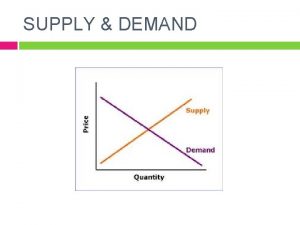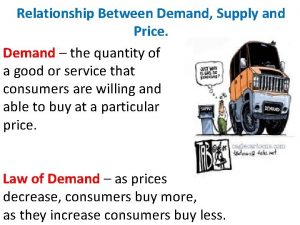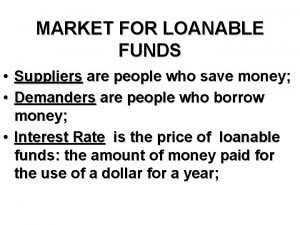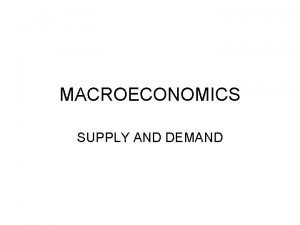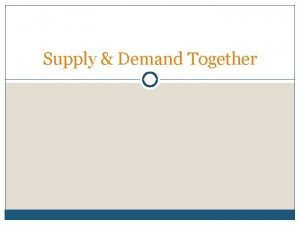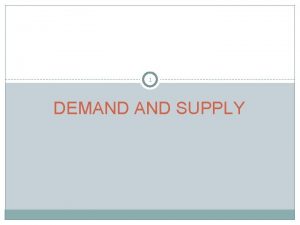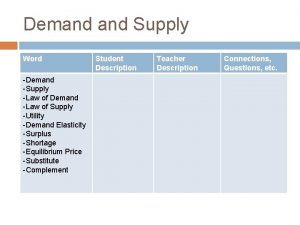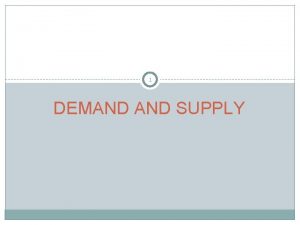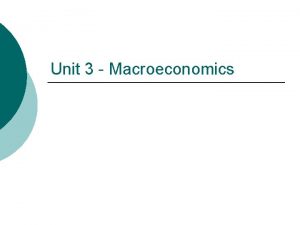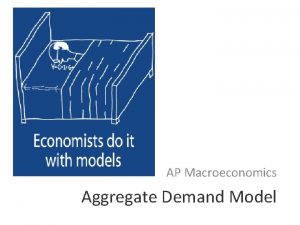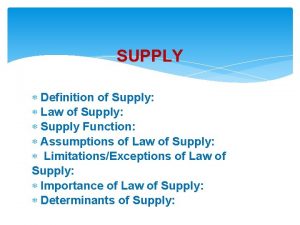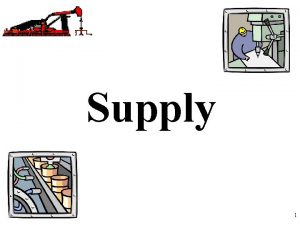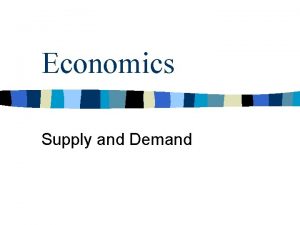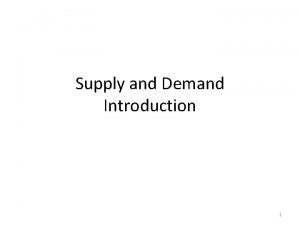MACROECONOMICS SUPPLY AND DEMAND DEMAND Demand is a



















- Slides: 19

MACROECONOMICS SUPPLY AND DEMAND

DEMAND • Demand is a schedule or a graph showing the relationship between the price of a product and the amount of consumers are willing and able to buy.

LAW OF DEMAND • The quantity demanded varies inversely with changes in price. • Prices rise; demand down (curve shifts to the left) • Why? • Fewer people can afford product • People buy smaller quantities • People substitute cheaper products

LAW OF DEMAND -2 • Prices fall; demand up (curve shifts to the right) • Why? • More people can afford product. • People buy larger quantities • People substitute product for more expensive/similar products

DEMAND SHIFTS • Change in consumer’s income • Change in population (# of buyers) • Demand for complementary (related) goods (cars/gasoline) • Cost of substitute goods—goods that can replace another (silk/polyester) • Expectations about the economy • Changes in tastes and preferences

TYPES OF DEMAND • Elastic demand—necessities; price will have influence on demand for the product. • Inelastic demand—luxuries; people will buy a product despite a change in price. (ex. : milk for children). The demand line is straight.

SUPPLY • Supply is a schedule or a graph showing the relationship between the price of a product and the amount producers are willing and able to supply.

LAW OF SUPPLY • Sellers will offer more of a product at a high price and less at a low price. Supply curves slope upward. • Prices rise; supply increases (curve shifts right) Why? Profits increase • Prices decrease; supply decreases (curve shifts left) Why? Profits decrease

SUPPLY SHIFTS • Changes in cost of resources (cost of production) • Changes in technology • Changes in the number of sellers/producers (competition) • Future expectations • Unexpected events

PURE COMPETITION ASSUMPTIONS • No single buyer or seller influences the market price • Competing products are identical (buyers and sellers are not influenced by quality or design) • All buyers and sellers have full knowledge of all prices being offered • Buyers and sellers can leave the market at will

MARKET OR EQUILIBRIUM PRICE • The price at which the quantity demanded and the quantity supplied are equal.

EFFECTS OF CHANGES IN DEMAND ON MARKET PRICE • Demand rises; price rises (curve shifts right) • Demand falls; price falls (curve shifts left) • Price varies directly with changes in demand

EFFECTS OF CHANGE IN SUPPLY UPON MARKET PRICE • Supply rises; price falls (curve shifts right) • Supply falls, price rises (curve shifts left) • Price varies indirectly with changes in supply

ELASTICITY AND INELASTICITY • Elastic goods: luxuries; many substitutes; price sensitive • Inelastic goods: necessities; unresponsive to price changes.

PRICES NOT SET BY THE MARKET • Surplus: supply exceeds demand • Shortage: demand exceeds supply • Price floors: established minimum prices that buyers must pay (government farm subsidies) • Price ceilings: established maximum prices that sellers may charge ( price controls)

SHIFTS IN SUPPLY AND DEMAND Problem #1 • The product being considered is jelly beans. • The price of sugar increases. • The price of bubble gum, a close substitute for jelly beans, increases. • A machine is invented that makes jelly beans at a lower cost.

Problem #1 (cont’d) • The price of soda, a complementary good for jelly beans, increases. • Widespread prosperity allows people to buy more jelly beans.

Problem #2 • Assume that a heavy frost destroys half the world’s coffee crop and that people use more cream in coffee than they do in tea. • What is the effect of the loss of the coffee crop on: demand, supply, equilibrium price, and equilibrium quantity for each of the following: coffee, tea, cream and automatic coffee makers

Problem #3 • Assume people’s tastes change in favor of colored sports shirts, which are worn without neckties, and against white dress shirts, which are worn with neckties. • What are the effects of a shift to sports shirts on the demand, supply, equilibrium price and equilibrium quantity for each of the following: sports shirts, dress shirts, neckties and tie clasps?
 Ap macroeconomics supply and demand analysis
Ap macroeconomics supply and demand analysis Matching supply and demand in supply chain
Matching supply and demand in supply chain Module 5 supply and demand introduction and demand
Module 5 supply and demand introduction and demand Chapter 5 section 1 supply and the law of supply
Chapter 5 section 1 supply and the law of supply Microeconomics vs macroeconomics venn diagram
Microeconomics vs macroeconomics venn diagram What is macroeconomics
What is macroeconomics New classical and new keynesian macroeconomics
New classical and new keynesian macroeconomics Macroeconomics theory and practice
Macroeconomics theory and practice New classical and new keynesian macroeconomics
New classical and new keynesian macroeconomics Ang elastisidad ng supply ay
Ang elastisidad ng supply ay Unit 2 demand supply and consumer choice
Unit 2 demand supply and consumer choice 5 determinants of supply
5 determinants of supply Copyright
Copyright Money market supply and demand
Money market supply and demand Combining supply and demand worksheet
Combining supply and demand worksheet Interaction of demand and supply
Interaction of demand and supply What is the relationship between supply and price
What is the relationship between supply and price Who are the demanders of loanable funds
Who are the demanders of loanable funds Loanable funds graph
Loanable funds graph Supply and demand economics project
Supply and demand economics project







